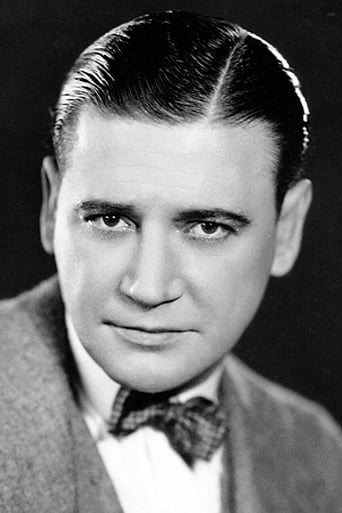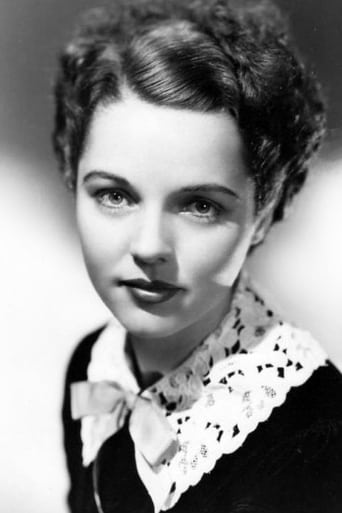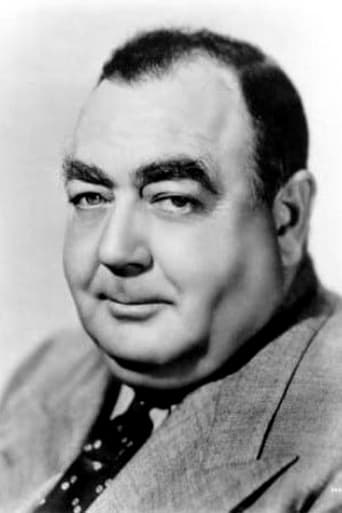Hellen
I like the storyline of this show,it attract me so much
VividSimon
Simply Perfect
Zlatica
One of the worst ways to make a cult movie is to set out to make a cult movie.
LeonLouisRicci
Wild Pacing with a lot of Western Movie Ingredients Paraded out for WWII Movie Audiences. Explosives, Gun Battles with many Shooters On both sides, a Sprawling Saloon Brawl that is a Stuntman's Showcase, Cattle Stampede, and more Outlandish Outdoor Shenanigans.The Wartime Audiences sure got Their Money's Worth with this one. An Aging Richard Dix Shows Heroics, Honor, and Precise Marksmanship, although He is Nicked by incoming Bullets at least Five Times. Albert Dekker is a Dandy Villain and Victor Jory is on hand as an Ambiguous Mysterious Player in all the doings. It's Never Certain where He Stands and that Adds a bit of Intrigue.Jane Wyatt just Sparkles on screen and is Cute. Overall, a Rousing, Never Boring, Wide Open Western that is Entertaining. Willie Best will Certainly get Noticed as a Racial Stereotype and Comedy Relief, but is shown Respect by the "Good Guys". Note...There is a Propaganda insertion ("When Johnny Comes Marching Home Again") as WWII was raging on, to boost morale. A musical number that was popular during the Civil War it is here delivered by leggy George Cohan types.Note 2…The Print shown on TCM in 2015 was washed out and pretty shoddy. One assumes it is the best available. There is no contrast and it has a white-washed look. If it is the best out there, Film-Restorists-Archivists should be on the look out for better source material.
whitec-3
Any film with Richard Dix is worth a chance not only because he's a likable and powerful figure but he seemed to bounce around the edges of the studio system so that his films vary standard formulas in unpredictable ways. The Kansan's saloon sets are excellent, for instance, and the crowds well directed--other posts mention the remarkably modern dance number (with perspectival backdrops) and the extended brawl with well-choreographed sequences and character highlights. Outdoor cinematography at the toll-bridge across which several incidents of the plot transpire featured impressive depth and angle.A big stable of acting talent also raises this film's quality, but I'll let other posters provide those kudos.My only difference with other posters is their near-blanket condemnation of the Bones character played by the terrific William Best. Certainly most of the film's racial dynamics are regrettably stereotypical, but Dix and Best interact as two smart guys recognizing each other. The film's single best moment for me was when the Jory character enters Best's servant quarters at the Sager Hotel. When Jory walks in, the Bones character is READING, which suggests that not just Willie Best but his character knows that Bones's minstrel persona is an act. Further, when Jory leaves the room, the door swings shut to reveal a portrait of Lincoln.
jetan
This probably doesn't deserve the "B Movie" sobriquet. The production values are pretty high and it is quite heavy on the movie stars. This looks to me like it would have taken the A spot on a bill. Dix is good but Victor Jory nearly steals the show. The high point is likely one of the most over-the-top barroom brawls I've ever seen on celluloid. The script is also fine, although nothing too original. The low point in the movie....aside from a really unfortunate racial caricature.... is probably represented by a really ghastly World War II style showgirl routine based around "When Johnny Comes Marching Home". All in all, a satisfying show.
classicsoncall
This obscure 'B' Western stands a cut above most with some creative writing and rather good performances by the principals. The film also offers a number of elements that I hadn't seen before after reviewing almost three hundred Westerns in this forum. Though a standard feature for this venue, the barroom brawl here is one of the longest and best staged fights you'll ever see, initiated by cattleman Tom Waggoner's (Eugene Palette) response to a couple of cowpokes who reach for their guns (see my summary line above). Once the fur starts to fly, you'll notice a couple of saloon girls join the action, and they manage to get the upper hand in their respective segments.Speaking of saloon girls, there was also a spirited song and dance rendition of 'When Johnny Comes Marching Home' by an actress who wasn't the female lead, another rarity. For that role, it was a surprise to see Jane Wyatt in an early film appearance, looking rather gorgeous as the hotel manager in Broken Lance. She spends her time in the film balancing her affections between the picture's star, Richard Dix, and Victor Jory, portraying the brother of town boss, Steve Barat (Albert Dekker). Jory always manages to succeed well in his roles, and is one of the few actors who can pull off hero and villain roles just as easily. In this one he straddles the fence for pretty much the entire picture, keeping you guessing on which way he'll turn by the finale. Speaking of which, one gets a fairly good impression that Jory's character didn't make it, but if this was a serial, he would have shown up in the next chapter.Then there's Willie Best in a comic relief role, used unfortunately to so much of the stereotype of a scaredy cat black man when facing danger. There was also an unfortunate line uttered by John Bonniwell (Dix) when he asked 'Bones' to "Come here boy". This was a pretty common occurrence in pictures of the era, and subliminally comes across as racist. With today's rarefied sense of political correctness, the comment was certainly noticeable, however Bonniwell treated Bones well throughout the rest of the picture.As for the story, a couple other reviewers do a good job of explaining the basic plot, so I won't dwell on that. With my viewing, I was on the lookout for supporting and uncredited actors that often pop up in these oaters, and "The Kansan" is a gold mine if you pay attention. Robert Armstrong is a Waggoner cattleman behind a mustache, and Rod Cameron is on board as a cowhand. It's easy to miss George Reeves in that quick shoot 'em up opening scene as Jesse James, while Jason Robards Sr. operates as one of Steve Barat's bank tellers. The rest of the uncredited cast holds a whole pile of bit actors whose names pop up in Westerns all up and down the Forties and Fifties.




